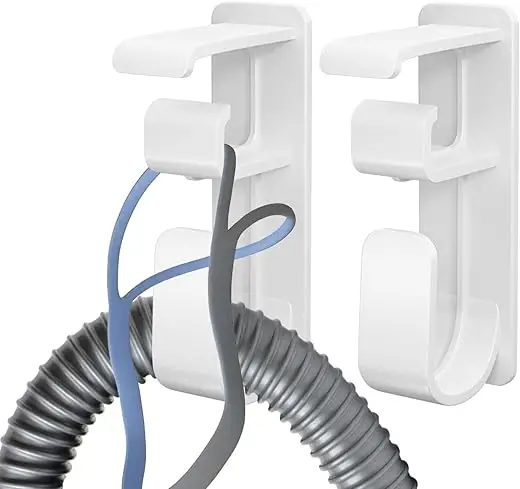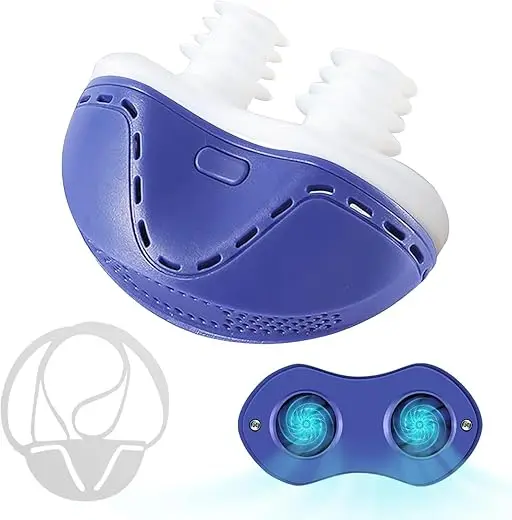Inspire therapy represents a revolutionary approach to treating obstructive sleep apnea—no mask, no hose, just restful sleep. This FDA-approved implantable device has transformed thousands of lives since 2014, offering hope to those who cannot tolerate CPAP. This comprehensive guide covers everything you need to know about Inspire, from candidacy through long-term success.
What Is Inspire Sleep Apnea Treatment?
The Technology Behind Inspire
Inspire is an implantable neurostimulation device that treats sleep apnea from inside your body. Think of it as a pacemaker for your airway—it monitors your breathing and delivers mild stimulation to keep your airway open throughout the night.
The system consists of three components:
- Breathing Sensor: Detects respiratory patterns
- Stimulation Lead: Delivers energy to hypoglossal nerve
- Small Battery: Powers the system and contains computer
How Inspire Works
The Process Each Night:
- You turn on Inspire with a handheld remote before sleep
- The device monitors every breath you take
- With each inhalation, it stimulates the hypoglossal nerve
- This moves your tongue forward, opening the airway
- Stimulation syncs perfectly with natural breathing
- You turn it off upon waking
The stimulation is gentle—most patients don’t feel it or quickly adapt. Unlike CPAP that pushes air to open the airway, Inspire moves your own tongue to maintain patency naturally.
Who Qualifies for Inspire?
FDA-Approved Criteria
Medical Requirements:
- Moderate to severe OSA (AHI 15-65)
- Documented CPAP failure or intolerance
- Age 18 years or older
- BMI ≤ 35 (expanded to 40 at some centers)
- No other untreated sleep disorders
CPAP Failure Definition:
- Unable to use CPAP >4 hours nightly
- Persistent side effects despite interventions
- AHI remains elevated on CPAP
- Documented compliance attempts
The DISE Procedure: Key to Candidacy
Drug-Induced Sleep Endoscopy (DISE) determines if you’ll respond to Inspire:
- Performed under light sedation
- Camera examines airway during induced sleep
- Identifies collapse patterns
- Rules out complete concentric collapse
- Takes 20-30 minutes
Disqualifying Findings:
- Complete circular airway collapse
- Isolated lateral wall collapse
- Certain tongue base patterns
- About 20% fail DISE screening
Additional Considerations
Good Candidates Often Have:
- Primarily tongue-based obstruction
- Anterior-posterior collapse pattern
- Failed other alternatives
- Strong motivation for implant
- Realistic expectations
Relative Contraindications:
- Pregnancy plans (MRI limitations)
- Frequent MRI needs
- Certain cardiac devices
- Neurological conditions affecting breathing
- Unrealistic outcome expectations
The Inspire Evaluation Process
Step 1: Initial Consultation
Your first appointment includes:
- Comprehensive sleep history
- CPAP usage data review
- Physical examination
- Insurance verification process
- Educational materials
- Preliminary candidacy assessment
What to Bring:
- Sleep study results
- CPAP compliance reports
- Medical records
- Insurance information
- List of questions
Step 2: Insurance Authorization
Requirements Typically Include:
- Sleep study showing AHI 15-65
- CPAP compliance data
- Documentation of side effects
- BMI verification
- Medical necessity letter
Timeline: 2-8 weeks for approval
Step 3: DISE Evaluation
Preparation:
- Fasting requirements
- Arrange transportation
- Anesthesia consent
- Same-day procedure
Results:
- Immediate candidacy determination
- Video review with surgeon
- Discussion of findings
- Surgery scheduling if approved
Step 4: Pre-Surgical Planning
Required Testing:
- Chest X-ray
- Blood work
- Cardiac clearance if needed
- Anesthesia evaluation
- Final insurance verification
Education Provided:
- Surgical details
- Recovery expectations
- Device activation timeline
- Long-term management
The Inspire Surgery
Surgical Procedure Details
Duration: 2-3 hours typically
Incision Sites:
- Upper chest (device placement)
- Under chin (nerve attachment)
- Lower rib area (sensing lead)
Surgical Steps:
- General anesthesia administered
- Generator pocket created in chest
- Hypoglossal nerve identified and cuffed
- Breathing sensor placed between ribs
- System connected and tested
- Incisions closed
What Happens During Surgery
Advanced Techniques:
- Nerve monitoring ensures proper placement
- Intraoperative testing confirms function
- Selective nerve stimulation preserves function
- Minimal tissue disruption
Safety Measures:
- Experienced surgical team required
- Specialized training mandatory
- Real-time nerve monitoring
- Strict protocols followed
Hospital Stay and Immediate Recovery
Typical Timeline:
- Surgery day: Overnight observation
- Pain management provided
- Swelling peaks at 48-72 hours
- Discharge morning after surgery
- No device activation for 4 weeks
Immediate Post-Op:
- Mild to moderate pain (well-controlled)
- Swelling under chin (expected)
- Voice changes (usually temporary)
- Diet restrictions (soft foods)
Recovery and Device Activation
Weeks 1-4: Healing Phase
What to Expect:
- Incision care requirements
- Activity restrictions (no heavy lifting)
- Gradual return to normal diet
- Possible tongue weakness (temporary)
- Follow-up appointment at 1-2 weeks
Managing Recovery:
- Pain medication as prescribed
- Ice for swelling
- Sleep position modifications
- Gentle neck exercises
- Patience with healing
Device Activation: One Month Post-Surgery
Activation Appointment:
- Device programmer used
- Initial settings determined
- Remote control training
- Sensation testing
- Home instructions provided
Learning to Use Inspire:
- Start with low settings
- Gradually increase over weeks
- Practice with remote
- Note any sensations
- Keep activation diary
Optimization Period: Months 2-3
Fine-Tuning Process:
- Weekly setting adjustments allowed
- Finding your therapeutic level
- Adapting to sensations
- Partner feedback important
- Regular check-ins
Common Adjustments:
- Stimulation strength
- Delay timing
- Pause settings
- Voltage modifications
Living with Inspire
Daily Device Management
Nightly Routine:
- Check remote battery
- Turn on device with remote
- Wait for therapy to start (default 30 minutes)
- Sleep normally
- Turn off upon waking
Remote Control Features:
- On/Off button
- Pause function (for eating/drinking at night)
- Voltage adjustment (+/-)
- Battery indicator
- Therapy check
Long-Term Maintenance
Regular Requirements:
- Annual sleep physician visits
- Device checks every 6-12 months
- Battery life monitoring
- No special daily maintenance
- MRI considerations
Battery Life:
- Average 11 years
- Varies with settings
- Monitored at check-ups
- Replacement requires surgery
- Procedure simpler than initial
Lifestyle Considerations
Activities You Can Do:
- All normal activities after healing
- Swimming and bathing
- Exercise and sports
- Travel (bring remote and medical card)
- Airport security (like pacemaker)
Precautions Needed:
- MRI compatibility (conditional approval)
- Inform all healthcare providers
- Carry device identification card
- Some medical procedures need planning
- Electromagnetic field awareness
Results and Effectiveness
Clinical Trial Data
Key Outcomes:
- 79% reduction in sleep apnea events
- 80% reduction in oxygen desaturations
- 94% reduction in loud snoring
- 90% patient satisfaction rate
- 85% bed partner satisfaction
Real-World Results
5-Year Follow-Up Studies Show:
- Sustained AHI reduction
- Continued high satisfaction
- Minimal device-related complications
- Improved quality of life measures
- Reduced cardiovascular risks
What Patients Report
Common Experiences:
- “Life-changing” energy improvement
- Better mood and concentration
- Relationship improvements
- Increased activity levels
- Freedom from CPAP equipment
Adjustment Period:
- Most adapt within 2-4 weeks
- Some sensation initially
- Partners may notice tongue movement
- Settings refinement needed
- Patience required
Potential Risks and Complications
Surgical Risks
Common (5-10%):
- Temporary tongue weakness
- Swelling and discomfort
- Voice changes (usually resolve)
- Incision site issues
Uncommon (<5%):
- Infection requiring antibiotics
- Device revision needed
- Nerve irritation
- Lead displacement
Rare (<1%):
- Permanent tongue weakness
- Device removal necessary
- Serious infection
- Allergic reaction
Long-Term Considerations
Device-Related:
- Lead fracture possibility
- Battery depletion
- MRI limitations
- Replacement surgery eventually
- Technology obsolescence
Medical:
- Weight gain may reduce effectiveness
- Other sleep disorders may emerge
- Regular monitoring essential
- Not a cure, but management
Cost and Insurance Coverage
Total Cost Breakdown
Typical Expenses:
- Device: $20,000-25,000
- Surgery: $10,000-15,000
- Hospital: $5,000-10,000
- Follow-up: $2,000-3,000
- Total: $35,000-50,000
Insurance Coverage
Most Commercial Plans:
- Cover with prior authorization
- Subject to deductibles
- May require specific centers
- Appeal process available
Medicare Coverage:
- Approved for qualified patients
- Specific criteria must be met
- Participating centers only
- Supplemental may help
Getting Coverage:
- Verify benefits early
- Use in-network providers
- Complete all documentation
- Appeal denials
- Consider financing options
Comparing Inspire to Other Treatments
Inspire vs. CPAP
| Factor | Inspire | CPAP |
|---|---|---|
| Effectiveness | 79% reduction | 95% reduction |
| Compliance | 90%+ | 50-60% |
| Comfort | No mask needed | Mask required |
| Portability | Just remote | Equipment needed |
| Maintenance | Annual checks | Daily cleaning |
| Cost | Higher initial | Lower initial |
Inspire vs. Oral Appliances
Advantages of Inspire:
- Higher efficacy for moderate-severe OSA
- No dental side effects
- Nothing in mouth
- Automated therapy
Advantages of Oral Appliances:
- Non-surgical
- Lower cost
- Fully reversible
- No battery concerns
Success Tips from Inspire Patients
Maximizing Your Results
Patient Recommendations:
- “Be patient during optimization”
- “Communicate with your team”
- “Track your energy improvements”
- “Join online support groups”
- “Don’t rush setting increases”
Common Mistakes to Avoid
- Increasing voltage too quickly
- Forgetting to turn on device
- Not reporting issues promptly
- Missing follow-up appointments
- Comparing to others’ settings
The Future of Inspire Technology
Current Developments
Next-Generation Features:
- Smaller device sizes
- Longer battery life
- Enhanced sensing algorithms
- Smartphone connectivity
- Automated adjustments
Expanded Indications
Research Areas:
- Higher BMI patients
- Central sleep apnea
- Pediatric applications
- Combined therapies
- Predictive algorithms
Making Your Decision
Questions to Ask Yourself
- Have I truly exhausted CPAP options?
- Am I committed to surgery and recovery?
- Do I understand the limitations?
- Can I handle the financial aspects?
- Are my expectations realistic?
Questions for Your Doctor
- What’s your experience with Inspire?
- What are my specific success odds?
- What’s your complication rate?
- How many devices has your center implanted?
- What’s the complete timeline?
Conclusion
Inspire therapy offers a life-changing alternative for those who cannot tolerate CPAP. With high satisfaction rates and proven effectiveness, it has earned its place as a mainstream sleep apnea treatment. The journey from evaluation through successful treatment requires commitment, but for appropriate candidates, the rewards are substantial.
If you’re struggling with CPAP and meet the criteria, Inspire deserves serious consideration. The freedom from masks and hoses, combined with effective apnea control, can restore not just your sleep but your entire quality of life. Consult with an Inspire-trained physician to explore whether this innovative therapy could be your path to peaceful nights and energetic days.
Remember: Inspire isn’t right for everyone, but for those who qualify, it can be nothing short of miraculous. Take the first step by scheduling an evaluation—you have nothing to lose but sleepless nights.
This guide provides comprehensive information about Inspire therapy. Individual results vary. Always consult with Inspire-trained physicians for personalized evaluation and recommendations. Medical information presented is current as of 2025.



